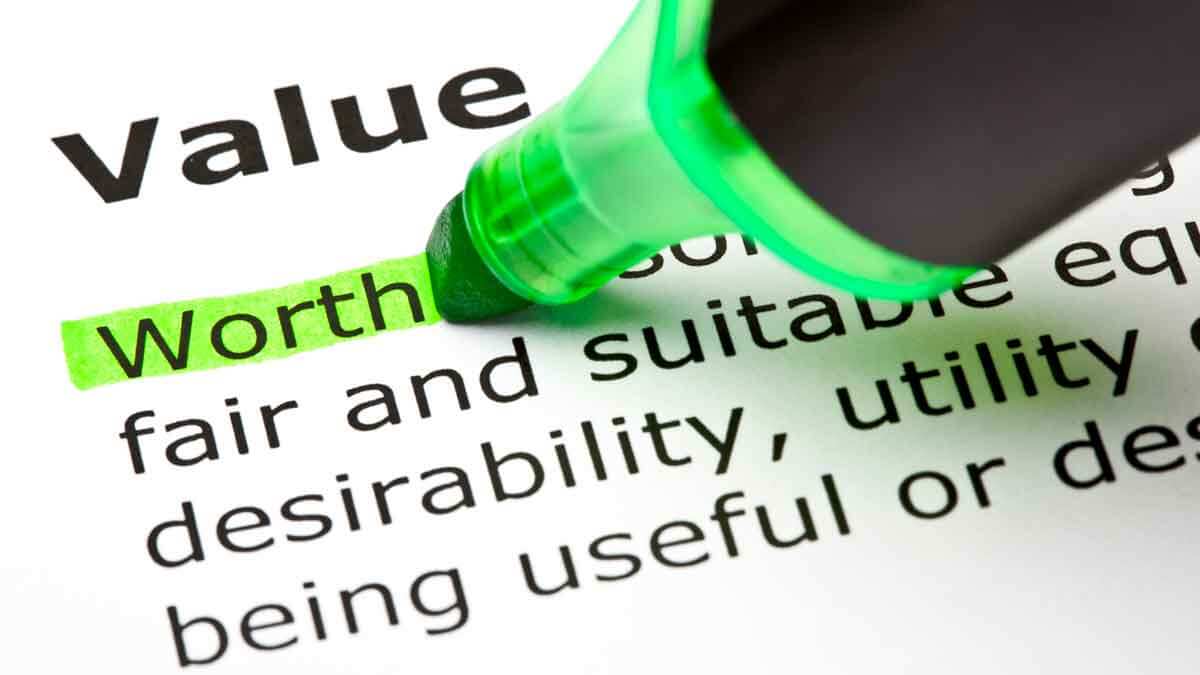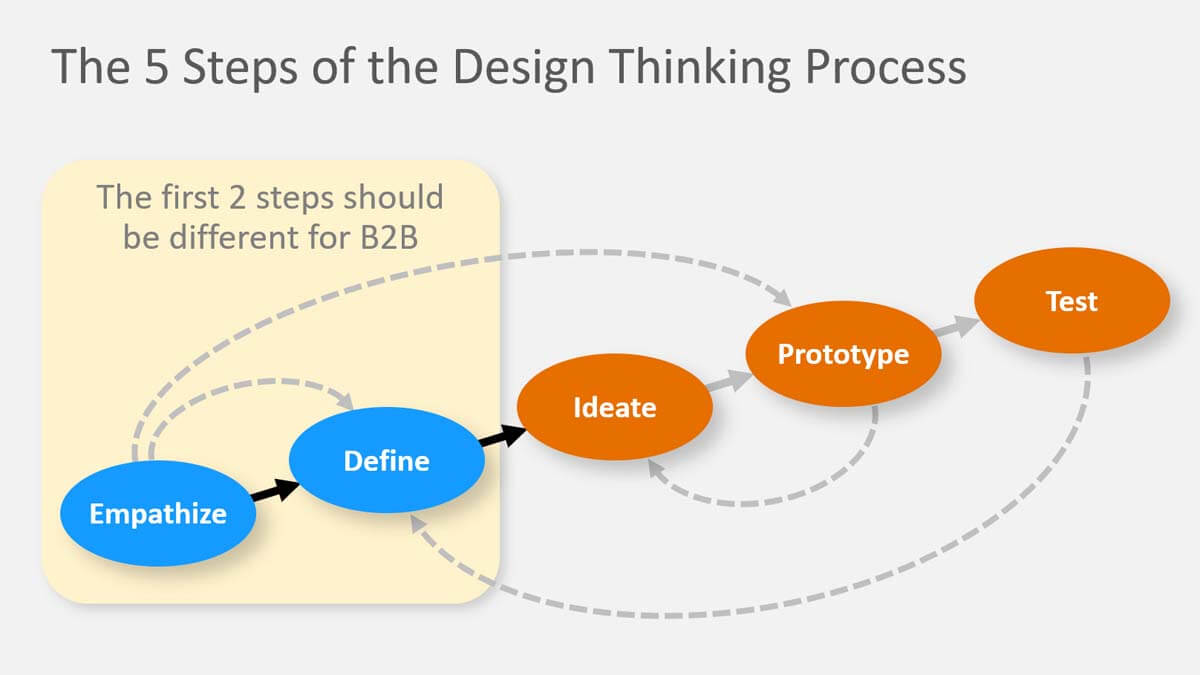It’s much more likely you don’t know how to ask them. B2C customers can seldom describe what will entertain them or boost their self-esteem. But B2B customers are knowledgeable, interested, and objective. They may not know the solutions, but they do know their desired end-results. You’ll learn this when you learn how to ask.
More in e-book, Reinventing VOC for B2B (page 15)
One of our best innovations started as an experiment. In 2004 I projected my notes during a customer interview. The customer loved it, the meeting went far longer than expected, and we haven’t looked back since. Sure, customers can correct your notes this way, but our biggest discovery was that customers own what they create and can see. We’ve been calling these “Discovery” interviews ever since.
More in video, Reinventing VOC for B2B
Lean Startup methodology refers to “Leap of Faith Assumptions,” and recommends testing assumptions with customers at the first opportunity. For B2B, this “first opportunity” to learn comes before a prototype is created… through VOC interviews to mine the foresight of knowledgeable customers. Don’t miss this B2B adjustment to Lean Startup.
More in white paper, Lean Startup for B2B (page 6)
Avoid “technology push.” But should you just leave your technology quivering on the lab bench? Hardly. Conduct customer interviews without mentioning your technology. If customer outcomes match your technology… wonderful! Otherwise, look for different technology (for this market), or look for another market (for this technology).
More in 2-minute video at 21. Give your hypotheses the silent treatment
Many suppliers ask “low-lumen” questions that neither illuminate nor engage customers. They may be biased, close-ended or too complex. Beware requesting sensitive information, or asking, “What would you pay for this?” When you ask for problems, don’t try to “help” with examples. Instead, let the customer choose the next topic to discuss.
More in white paper, Everyday VOC
If you don’t ask customers the right questions, you can’t quantitatively assess their next best alternative. So you’ll have to guess at pricing. Guess too high and customers won’t buy. Guess too low and… well, customers will let it go this time. And you leave money on the table, perhaps for a decade or more.
More in white paper, Catch the Innovation Wave (page 12)
With apologies to Tolstoy’s Anna Karenina… all great voice-of-customer (VOC) interviews are alike in the same way: The customer is talking during most of the interview. And they are talking about those outcomes (desired end results) they want to talk about. Anything else is clutter, much of which leads to unhappiness.
For B2B voice-of-customer interviews, plan on two rounds of interview… first qualitative interviews (called Discovery), followed by quantitative interviews (called Preference). In both cases, the customers will be doing most of the talking… and about matters that interest them. They’ll be happy. You’ll be happy.
More in video, Reinventing VOC for B2B
Design thinking is a powerful methodology for solving “wicked problems.” Unlike the well-stated problems we were given to solve in engineering school, these require figuring out what to work on, not just how to solve the problem. This perfectly describes real-world new product innovation, where we need to first understand customer needs.
As this diagram shows, the first two steps are “empathize” and “define.” Here’s the good news for B2B producers: You can do this much more effectively that B2C counterparts by using Discovery interviews (for “empathize”) and Preference interviews (for “define”). Check out this white paper to see why… and how: Design Thinking for B2B
Voice-of-customer interviews don’t really work unless the customer trusts you. You’ll tell your doctor, lawyer or therapist everything they need to know so they can help you. But only if you trust them. The same is true for your customers when you seek information to innovate for them. You build trust with your credibility, reliability, and a sincere interest in their well-being.
More in e-book, Leader’s Guide to B2B Organic Growth
Are you Newton’s object continuing in the same direction and speed… or are you the force acting on the object? Your company may think it can keep doing what it’s always done. But if your competitors learn how to understand unmet customers’ needs first, they will be the force that changes your direction (down) and speed (slower)… in their favor. Inertia is not your friend. Learning and change are.
More in e-book, Leader’s Guide to B2B Organic Growth
Your front-end-of-innovation should center on a specific customer job to be accomplished. Focusing on your product concept is far too limiting. Let’s say your business makes some physical article. By focusing on the customer’s job, you might conceive a different product, service, or even a completely new business model.
More in Leader’s Guide Videos Lesson 13, Immerse in customer outcomes
More than you might think. We asked nearly 400 people who had conducted over 1800 B2B-optimized Discovery interviews. Over half agreed or strongly agreed that they had gained unexpected interviews. Only 14% gained no unexpected information at all. (Most of the 1800+ interviews were in suppliers’ existing markets.)
More in white paper, Guessing at Customer Needs (page 6)
Your market is growing at 3% and your operating plan says you’ll grow faster than this next year. Of course, your competitors have similar plans… meaning everyone plans to grow faster than the market served. As TV psychologist Dr. Phil would say, “How’s that been working for you?” Could it be time for a different approach… e.g. understanding customer needs far better than competitors?
More in Leader’s Guide Videos Lesson 1, Recognize your growth challenge
First, how interested are they in this topic? Second, how confident are they that this supplier can help them? The first condition puts a premium on your ability to find the right people in the right companies. The second requires you to demonstrate serious intent and—if possible—past successes in market-facing innovation.
More in article, Better B2B Customer Recruiting for Market Research














